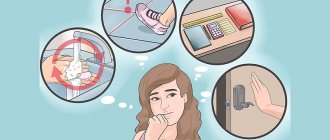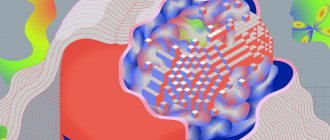A personality disorder that is characterized by increased sensitivity to frustration (the inability to satisfy needs), persistent distrust of others and excessive suspicion is paranoid personality disorder.
People with this constitutional disorder are usually distrustful, touchy and vindictive. They are not inclined to enter into friendly or friendly relationships, and often perceive the ordinary actions of others as hostile towards themselves. An aggressive reaction to the neutral actions of others often leads to conflicts and rejection, which in the perception of a person with paranoid personality disorder justifies his suspicions of the bad intentions of others. In different literature there may be other names for paranoid personality disorder - paranoid or paranoid.
The name paranoid can be considered even terminologically more strict and precise, since paranoid ideas, for example, relationships, persecution, are delusions, which in form are called systematized (distorted interpretation of real facts). It is the systematized ideas that are present in paranoid personality disorder. Paranoid ideas are an unsystematized form of delusion, the so-called primary, that arises suddenly, without any connection with real events. Nevertheless, in ICD 10 the name of this personality disorder comes first with “paranoid” and then in brackets with “paranoid”. In this article, the proposed terminology will be followed, but it must be remembered that with paranoid (paranoid) personality disorder, systematized delusional ideas are observed, synonymous with ideas of interpretation (and not ideas of “ready knowledge”, as with paranoid delusions).
Causes
Paranoid personality disorder occurs equally in men and women. It can manifest itself in a person whose relatives include people with schizophrenia or who had communication limitations in childhood (living in a family of emigrants, the deaf, under a strict totalitarian regime, etc.). There is no information on how widespread this disease is in the world.
There are several reasons contributing to the development of paranoid psychopathy:
- Evolutionary theory. According to her followers, suspicion helps to survive in any era. Focusing on the assertion that only the strongest will survive divides the world strictly into friends/foes, black/white - this becomes the foundation of paranoia.
- Hereditary theory - the disease is transmitted by genes from generation to generation.
- Psychoanalytic theory. If an individual grew up in a family where he was overprotected, physically punished for any offense, humiliated, and a lot was demanded of him, then he is at risk.
Differential diagnosis
Paranoid versus psychopathic client: If a paranoid person notes that you share their values with them, then they are capable of loyalty and generosity. Projection is a psychological defense mechanism in psychopathic and paranoid individuals. However, the former are not empathic, and paranoid individuals are deeply connected to the object (for example, another person). The experience of betrayal can be a threat. They perceive any violations of morality in their partner as a vice in themselves that should be eradicated.
Paranoid personalities in comparison with absessive ones: the latter are sensitive to little things, they are afraid of control, but do not experience the fear of physical harm, moral humiliation, which is typical of paranoid personalities. Absessive clients try to cooperate with the psychologist, although they may have alternative positions. A violent reaction to clarification at work may indicate that the client has dominant paranoid qualities.
Paranoid versus dissociative personality: Paranoid traits may be present in dissocial personalities.
Next, let's look at the depressive personality type.
Paranoid personality
People suffering from paranoid personality disorder do not understand jokes at all - they have no sense of humor. They are unable to experience any failures; they are overwhelmed with negative emotions for any reason. These individuals are suspicious of favorable relationships, which is why they are unable to create normal, friendly relationships. At the same time, such a person is quite active and cannot sit in one place for a long time.
Psychiatrist Pyotr Borisovich Gannushkin, describing his patients, argued that paranoid individuals think monotonously, illogically, “twisting” everything in their own way. They do not accept criticism due to their high self-esteem. Paranoid people react to it with sharp physical aggression, abuse, and harbor anger and resentment for a long time.
Colleagues, relatives and friends of the paranoid suffer from his negativism. It is very difficult to be intimate or married to such a person, since he is constantly oppressed by pathological suspicion and the ensuing jealousy.
Paranoid people have the following characteristics:
- negative emotionality;
- hypervigilance;
- infantilism;
- they see the negative sides in everything;
- one-sided thinking;
- high self-esteem;
- conflict;
- aggressiveness;
- increased activity;
- pedantry.
P.B. Gannushkin identified the formation of overvalued ideas as the basis of paranoid personality disorder, and the most common of them is the patient’s conviction of his own hypersignificance. The individual thinks only about this, is unable to switch to something else, cannot control his own thoughts when they “rule” his mind. Based on this, the scientist proposed to classify paranoids according to the prevailing overvalued ideas: fanatic, litigious (slander, querulant), inventor, etc.
People with paranoid personality disorder neglect their health. Having received a diagnosis of any physical illness, they do not take any measures to recover: they refuse to take prescribed medications and follow the doctor’s recommendations. This affects their idea of someone’s bad attitude towards their personality.
There is also a classification of paranoid individuals according to the type of nervous system (according to Ernst Kretschmer, a German psychologist and psychiatrist):
- A sensitive paranoid is an unhappy person, a victim (as he himself believes). Those around him, in his opinion, treat him with malice, unfairly, and feel that he is an enemy. He is unsure of his abilities, closed, vulnerable, has low self-esteem, experiences failures greatly, is critical, but from time to time a sense of self-esteem flares up in him. A person suffering from this type of psychopathy accumulates negative emotions that can suddenly burst out through inappropriate actions: self-mutilation and beating others.
- An expansive paranoid is a very self-confident leader, and considers those who disagree with him to be dangerous. Suspicious, excitable, assertive, aggressive. He is quite pleased with himself, considers himself exceptional, ideal, perfection, does not recognize indications of shortcomings, considers himself the best in a certain matter and builds a successful career only so that others envy and admire him. Such a person can be called “two-core” - he almost never gets tired, is active at any moment, and his mood is always elevated.
Defense and adaptation processes in paranoia
The degree of projection in paranoids can be borderline or neurotic.
In a disturbed personality, the Ego is completely projected and external, no matter how much these projections may appear to other people.
Individuals with a preserved “I” still have the opportunity to test reality.
Borderlines act in ways that make their projections suitable for the target of the projection. For example, a woman who does not admit her hatred and envy may tell her psychologist that he is jealous of her. And she interprets the psychologist’s empathic manifestations as a desire to control.
In neurotic paranoids, their feelings are projected in a way potentially alien to the ego. Such a person projects, but at the same time a part of his own “I” remains, which, when forming a trusting working alliance between the client and the psychologist, can reach the level of awareness.
Paranoid individuals project their feelings externally, including in order not to recognize unbalancing relationships.
Psychologist Karen, exploring paranoid dynamics, summarized the basic psychological defense mechanisms of the individual. For example, how can a person with delusions cope with the desire for intimacy with a person of the same sex. At the same time, the person seeks to refute “I love him!” through a number of ways:
- Megalomania: “I don’t love him, I love myself!”
- Erotomania: “I don’t love him, I love her!”
- Delusional jealousy: “I don’t love him, she loves him!”
- Projection of homosexuality: “I don’t love him, he loves me!”
- Reactive formation: “I don’t like him, I hate him!”
- What allows me to hate him: “He hates me! If I hate him, I don’t love him!”
Symptoms
As mentioned, paranoid personality disorder begins to manifest itself in childhood. Its first signs: straightforwardness, stereotypical thinking, distrust. The child often gets into a showdown with peers, gets offended, remembers the insults and tries to take revenge for them. He is not interested in the feelings and needs of other people.
After 20 years of life, it becomes difficult for a paranoid person to adapt to changes; he begins to see life exclusively in black and white, and to think the same way. It seems to him that people around him are hostile and want to appropriate his achievements and property. He is “gnawed” by doubts about the loyalty of his friends and partner, jealousy. The patient considers every word and deed of those around him to be filled with hidden meaning that is harmful to him. For example: children in the apartment upstairs stomp loudly, because their parents taught them this specifically to annoy the neighbor below.
The person suffering from paranoid disorder is sensitive to insult and harm, even if an apology has been made for it. With his help, even the smallest offense grows into a big conflict and irreconcilable enmity.
If a paranoid person is treated with disrespect or seems to be disrespectful, then an instant “response” will follow in the form of an outburst of anger or a counterattack. Suspicion does not allow such a person to share intentions or feelings with those close to him, so that no one can use the information received against him.
Paranoid people suspect others of various terrible offenses, interpreting their behavior using their imagination. They can even construct a completely logical confirmation of their statements, convincing the listener of the indisputability of the facts they have invented.
Emotions in patients are strong, but one-sided: dissatisfaction, disappointment, anger, and irritability prevail. Responsiveness, warmth and sense of humor are alien to them. They love only themselves; possession of power and strength deserve their admiration, and weakness deserves contempt.
A hypervalued obsession is formed (this was discussed above). It becomes a goal, and its objectivity or subjectivity is completely unimportant, although it may be completely absurd - in the opinion of the paranoid, this is socially important. That is, a person is ready to fight to the end for the public good in his personal opinion, showing a kind of messianism. When achieving a goal, he only needs recognition of merit, and not joy for bringing any benefit to society. The main thing is to be called irreplaceable and very necessary.
Paranoid individuals work diligently, but only if their work activity coincides with a super idea. They do not accept any criticism, since they consider themselves experts and great specialists in a certain topic. Compromise with colleagues of equal or lower rank is excluded, although minor concessions to superiors are possible.
The people around him, even his close ones, in the patient’s opinion, should contribute in every possible way to achieving his goal; for his own benefit, he often uses lies and manipulation.
There have been many people in history with characteristic paranoid signs: Lenin, Peter the Great, Thomas Edison, Bobby Fischer.
So, we list the main signs of paranoid psychosis:
- provoking conflict;
- idealization of oneself;
- inadequate perception of criticism;
- self-isolation;
- dissatisfaction with everyone and everything;
- an obsessive desire to fight for your rights anywhere;
- taking mistakes and failures to heart;
- pathological jealousy, distrust;
- looking for negativity in the words and deeds of other people;
- the desire to focus everything on oneself;
- exaggeration of one's own importance.
Service price
- HOSPITAL Day hospital5 000
- Day hospital with intensive care8,000
- 24-hour hospital (all inclusive, cost per day) 12,000
- 24-hour hospital (all inclusive, cost per day). Single occupancy24,000
- 24-hour hospital (all inclusive, cost per day). Single occupancy in a superior room 36,000
- Primary family counseling for relatives of patients undergoing inpatient treatment free of charge
- Group psychotherapy for relatives of patients undergoing inpatient treatment free of charge
- Group psychotherapy for 24-hour and day hospital patients free of charge
- Individual post for a hospital patient (if indicated)6,000
Paranoid
(paranoid syndrome, paranoid psychosis) is a painful condition manifested by the presence of inconsistent and unsystematized delusions (false conclusions), based on absurd and contradictory evidence, and combined with deceptions of perception in the form of hallucinations, illusions, and mental automatisms.
Delirium completely covers the sick person and causes him to behave incorrectly. A critical attitude towards one’s condition and behavior is lost.
Paranoid from Greek is translated as similar to paranoia (paranoia from Greek is madness). Paranoid and paranoid are synonyms.
Based on the severity and severity of delusions, psychiatrists distinguish three types of delusions: paranoia
,
paranoid
and
paraphrenia
.
The content of delusional ideas may vary. Persecution, influence, special treatment, religious, love and erotic content. Deceptions of perception most often have the nature of pseudo-hallucinations (vivid images, divorced from reality, perceived with a feeling of being “made”).
Causes of paranoid
- diseases of the psyche and nervous system. The mechanism of development of the paranoid state is associated with gross disturbances of metabolic processes in the brain tissue, leading to changes in mental functions, primarily thinking and perception.
Therapy
The diagnosis of “paranoid personality disorder” is made on the basis of characteristics characteristic of this disease that are observed in the patient throughout his life. The psychiatrist should exclude the presence of delusional disorder, paranoid schizophrenia, consequences of organic brain pathology, skull injuries, drug addiction and alcoholism.
To treat the disorder, medications and psychotherapy are used in combination. Sedatives, tranquilizers, and antipsychotics are prescribed as medications. However, since this is negatively perceived by the patient due to his suspicion (refusal to take it, complaints about ineffectiveness), the courses are usually prescribed very short.
To conduct successful psychotherapy, a specialist needs to establish a trusting, frank relationship with the patient in order to choose the appropriate technique. This can be behavioral psychotherapy, psychoanalytic or Jungian depth psychoanalytic therapy.
Such treatment lasts quite a long time, since the patient’s negativistic life position does not allow him to interact normally with the doctor. Therefore, the latter needs a lot of experience and patience. The paranoid person is aggressive towards the specialist, splashes out negative emotions on him, but this must be endured and everything possible must be done so that the patient realizes and overestimates the conflict artificially caused by him, extinguishes the aggression and gets rid of the overly valuable idea.
We are also working with relatives. They should be taught to turn the upcoming conflict into a humorous side, to make sure that there is as much positivity in the patient’s life as possible, and to avoid critical remarks towards the patient.
Unfortunately, paranoid disorder cannot be completely cured. With age, its symptoms become stronger, but if therapy is started on time and it is adequate and professional, then it is quite possible to achieve stable remission.










